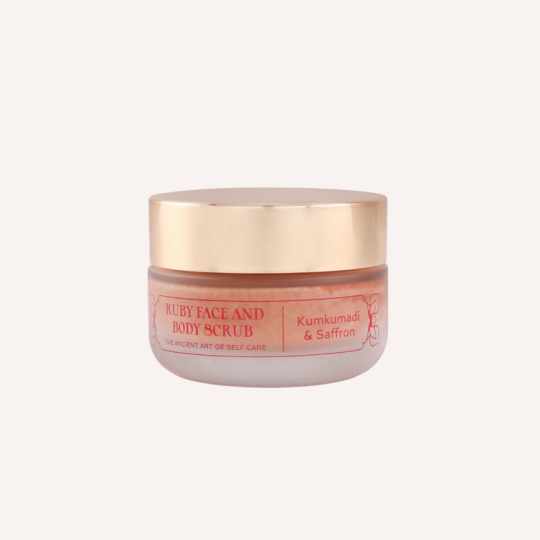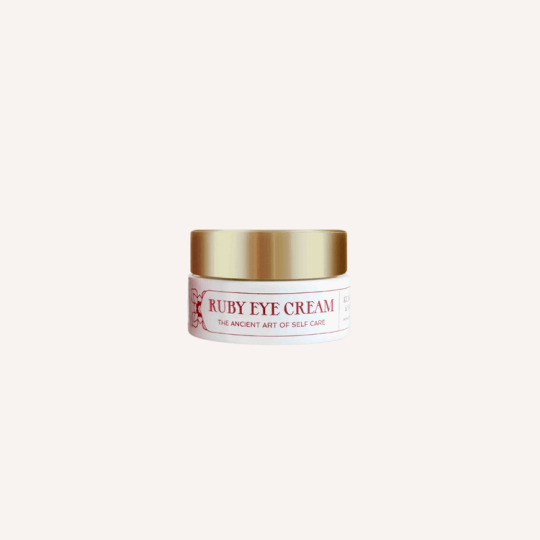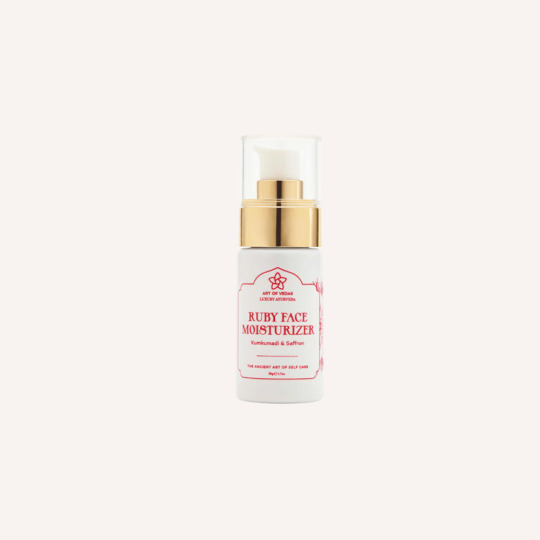Rooted in the ancient wisdom of Ayurveda, Art of Vedas is a premium skincare and wellness brand dedicated to holistic beauty and well-being. Our products are thoughtfully crafted using time-honored Ayurvedic practices, blending natural ingredients with modern formulations for skin rejuvenation, balance, and vitality. From revitalizing skincare treatments to wellness rituals, we bring you the art of self-care as envisioned by the sages of the Vedas. Each product is designed to nourish not only the body but also the mind and spirit, promoting inner harmony and outer radiance.
Don't wanna be here? Send us removal request.
Text
Unveiling the Secrets of Ayurvedic Skin Care
In the realm of beauty and wellness, Ayurveda, the ancient Indian holistic healing system, stands as a beacon of wisdom, offering a gentle yet profound approach to skincare. Far from being a mere fleeting trend, Ayurvedic skincare principles have stood the test of time, with roots extending back over 5,000 years.
Demystifying the Three Doshas: The Foundation of Ayurvedic Skin Care
At the heart of Ayurvedic philosophy lies the concept of doshas, the three primary energies that govern our physical and mental constitution. These doshas – Vata, Pitta, and Kapha – are not fixed but rather fluid, constantly adapting to our lifestyle, diet, and environment.
Vata: The Windy Dosha
Those with Vata-dominant constitutions often have dry, rough skin, prone to flakiness and sensitivity. Ayurvedic skincare for Vata types emphasizes nourishing and hydrating the skin, using oils such as sesame or almond oil, and avoiding harsh soaps and cleansers.
Pitta: The Fiery Dosha
Pitta individuals typically have oily, acne-prone skin, prone to redness and inflammation. Ayurvedic skincare for Pitta types focuses on cooling and calming the skin, using ingredients like sandalwood powder and aloe vera gel, and avoiding excessive heat and sun exposure.
Kapha: The Earthy Dosha
Kapha types often have dull, congested skin, prone to blackheads and blemishes. Ayurvedic skincare for Kapha types emphasizes cleansing and purifying the skin, using ingredients like turmeric and neem powder, and avoiding heavy moisturizers and oils.
Ayurvedic Skincare Rituals: A Journey to Radiant Skin
Ayurvedic skincare is not just about using products; it's about embracing a holistic approach that nurtures the skin from within. These rituals, practiced regularly, can transform your skin's health and vitality.
Morning Rituals: Awakening the Skin
Start your day with a gentle Art of Vedas Natural Face Wash, using a mild, natural cleanser like Rose Petals Powder. Followed by a facial oil massage, to nourish and revitalize the skin.
Evening Rituals: Rejuvenating the Skin
In the evening, cleanse your face using a mild cleanser and follow with a purifying Herbal Face and Body scrub made from a combination of herbs and clay. Allow the powder to dry completely and rinse it off with warm or Rose water.
Additional Ayurvedic Skincare Tips for Radiant Skin
Embrace natural ingredients: Prioritize natural ingredients like turmeric, neem, sandalwood, and rose water in your skincare routine.
Maintain a balanced diet: A healthy diet rich in fruits, vegetables, and whole grains contributes to overall skin health.
Manage stress: Stress can wreak havoc on your skin, so find healthy ways to manage stress, such as yoga, meditation, or spending time in nature.
Avoid harsh soaps and cleansers: Harsh soaps and cleansers can strip the skin of its natural oils, making it dry and irritated.
Protect your skin from the sun: Sun exposure is a major cause of premature aging and skin damage, so use a broad-spectrum sunscreen every day.
Art of Vedas: Ayurvedic Skin Care Products for Radiant Beauty
Art of Vedas, a leading manufacturer of Ayurvedic skincare products, offers a range of natural, effective products that align with the principles of Ayurveda. The products are formulated using time-honored Ayurvedic ingredients and are free from harsh chemicals and preservatives.
Embracing Ayurvedic Skincare for Radiant Wellness
Ayurvedic skincare is not just about treating the skin; it's about nurturing the whole being. By embracing the wisdom of Ayurveda, you can embark on a journey to radiant, healthy, and youthful skin, all while promoting overall well-being.

#art of vedas#ayurvedic products#natural products#ruby face moisturizer#skin care#ayurvedic#ayurveda#skin care products
0 notes
Text
HOW TO USE AMLA OIL ON YOUR HAIR?
Amla Oil: A Hair Care Essential from Ayurveda
Embracing the goodness of nature has always been a timeless approach to achieving beauty and wellness. Among the myriad of natural remedies, Amla oil, derived from the Indian gooseberry, stands out as a powerhouse for hair care.
The Marvel of Amla:
Amla, scientifically known as Phyllanthus emblica, has been revered in Ayurveda for centuries. Bursting with essential fatty acids, antioxidants, and vitamins, this small fruit is a treasure trove for promoting hair health. Its unparalleled ability to nourish and strengthen hair makes it a key ingredient in various beauty formulations, including our Art of Vedas Ayurvedic Hair Oil.
Amla Oil in Ayurveda:
Ayurveda, the ancient Indian system of medicine, considers Amla as a 'Rasayana' or rejuvenating herb. In Ayurvedic practices, Amla oil is hailed for its ability to balance the doshas, particularly Pitta. This equilibrium contributes to overall well-being, reflected in the vitality and shine of the hair.
Would you like to know your dominant Dosha? Take the Free Dosha Test and get personalized results by our Ayurvedic Doctors.
Art of Vedas Ayurvedic Hair Oil: A Symphony of Natural Goodness:
Art of Vedas Ayurvedic Hair Oil takes the essence of Amla to a whole new level. Crafted with precision and care, this hair oil combines Amla with a harmonious blend of Ayurvedic herbs, each chosen for its unique contribution to hair health. Let's delve into the steps on how to incorporate this transformative oil into your hair care routine.
Step-by-Step Guide to Amla-infused Radiance:
Preparation: Before applying Art of Vedas Ayurvedic Hair Oil, ensure your hair is clean and dry. It's best to use the oil on unwashed hair to allow the nutrients to penetrate effectively.
Application: Start by parting your hair into sections. Take a small amount of the oil and gently massage it into your scalp using circular motions. Ensure that the oil is evenly distributed from roots to tips.
Deep Conditioning: For an extra boost, wrap your hair in a warm towel after application. This allows the oil to penetrate deeply into the hair shaft, promoting hydration and strengthening.
Leave-in or Wash Out: Depending on your preference, Art of Vedas Ayurvedic Hair Oil can be used as a leave-in treatment or washed out after a few hours. Experiment to find what works best for your hair type and lifestyle.
The Art of Vedas Advantage: Discover the Benefits:
Strengthens Hair: Amla, in synergy with other Ayurvedic herbs, fortifies hair strands, reducing breakage and promoting overall strength.
Nourishes Scalp: The oil's deep conditioning properties nourish the scalp, addressing issues like dryness and dandruff.
Promotes Shine: Experience a natural sheen as Amla imparts a lustrous glow to your locks, enhancing their overall radiance.
Encourages Growth: The rich nutrient profile stimulates hair follicles, encouraging healthy hair growth and preventing premature hair loss.
The Myth about Hair Color Change:
A common misconception surrounding Amla oil is whether it alters hair color. Rest assured, Amla oil doesn't change the natural color of your hair. Instead, it enhances and enriches the existing color, adding depth and vibrancy.
In the pursuit of healthier and more vibrant hair, Amla oil emerges as a timeless ally. By incorporating the Art of Vedas Ayurvedic Hair Oil into your routine, you're not just treating your hair but indulging in a centuries-old tradition that celebrates the holistic approach to beauty.

#art of vedas#ayurvedic products#haircare#healthy hair#olives and aloevera#hair#beauty#natural products
0 notes
Text
WHAT ARE THE TYPES OF KAPHA DOSHA?
Ayurveda, an ancient system of natural medicine, categorizes the body's functioning into three primary doshas: Vata, Pitta, and Kapha. Each of these doshas is further divided into sub-doshas, which govern specific parts of the body and their functions. Let us delve into the Kapha dosha today. The five sub-doshas of Kapha play critical roles in maintaining overall health and well-being.

1. Tarpak Kapha
Located in the head, Tarpak Kapha nourishes the entire nervous system. It provides lubrication to the brain tissues, which is essential for the functioning of Indriyas or the sensory and motor nerves. When out of balance, it can cause a lack of mental clarity, slow learning, weakened memory, and emotional disturbances such as irritability, anger, greed, and envy. Spiritual practices like meditation and herbs that support the nervous system, such as ginger and long pepper, can help restore balance.
2. Bodhaka Kapha
This sub-dosha is situated in the mouth, tongue, and throat. It is responsible for the sense of taste and is connected to the brain’s parietal lobe. Bodhaka Kapha influences saliva production and enzyme activity, which are crucial for digestion. It also acts on a deeper level of intelligence. Imbalances can lead to digestive issues, disrupted saliva regulation, and voice problems. Herbs like liquorice can help manage these imbalances.
3. Avalambak Kapha
Found in the chest region, Avalambak Kapha supports the lungs, heart, and associated structures by providing lubrication and nourishment. It is crucial for smooth respiratory and cardiac functions. Imbalances can cause issues such as fluid retention or dryness in the lungs and heart. Kapha-pacifying herbs, along with respiratory-supporting herbs like trikatu and bivitaki, can be beneficial.
4. Kledaka Kapha
This sub-dosha is located in the upper stomach and is responsible for moistening and softening food during digestion. It protects the stomach lining from acidic damage by maintaining an alkaline environment. Excess Kledaka Kapha can lead to inefficient digestion and toxin build-up, while a deficiency can cause hyperacidity and discomfort. Dietary adjustments and herbs like ginger and pepper can help balance Kledaka Kapha.
5. Shleshaka Kapha
Shleshaka Kapha provides lubrication to all the joints in the body, facilitating smooth movement and acting as a shock absorber. Imbalances can result in swollen, irritated joints or dry, crackling joints. Herbs like punarnava and shilajit, along with local heat application, can help manage joint health. Understanding and maintaining the balance of these sub-doshas is crucial for overall health and well-being. Art of vedas offers various herbs, dietary recommendations, and lifestyle practices to support the optimal functioning of each sub-dosha.

1 note
·
View note











